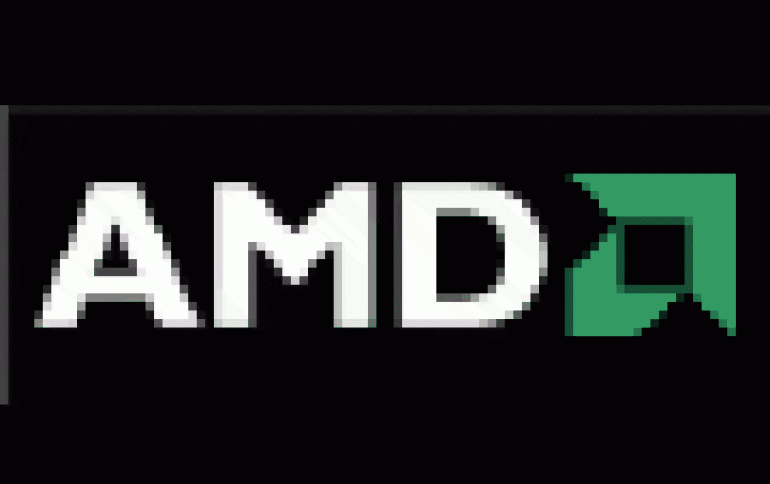
AMD Details Native Quad-core Design Features
AMD today unveiled more architectural features for its upcoming native Quad-Core AMD Opteron processors (codenamed "Barcelona") during a presentation to the International Solid State Circuits Conference (ISSCC).
AMD estimates that the Quad-Core AMD Opteron processors will offer a 40-percent performance advantage over the competition in benchmark testing. in addition, AMD?s redesigned
microarchitecture will enable new power- and thermal-management
techniques. Among the new features are enhancements to AMD PowerNow! technology for dynamic adjustment of individual core frequencies.
AMD is taking a multi-pronged approach to enabling reduced system-level power consumption for exceptional performance and low energy costs. Enhancements to AMD PowerNow! technology will enable systems based on native Quad-Core AMD Opteron processors to dynamically adjust frequencies at the individual core level for further power consumption reductions.
Another new power management enhancement leverages AMD?s Direct Connect Architecture and integrated memory controller by enabling "Barcelona" processor cores to reduce voltage levels even while the memory controller runs at full speed. This enables the memory controller to service external memory requests independent from core p-state transitions, thus enabling p-state opportunities which can lead to additional power savings.
The system memory interface also includes a feature that powers down memory logic when not in use. AMD has also made extensive use of "clock gating" in the "Barcelona" design to enable automatic shut-down of areas of logic not being utilized for further power savings.
Upcoming native Quad-Core AMD Opteron processors are designed for the same power infrastructure AMD offers today - 68, 95 and 120 Watt thermal envelopes.
While special attention was paid to the power-saving design features in native Quad-Core AMD Opteron processors, equal emphasis was placed on delivering leading performance. Quad-Core AMD Opteron processors are packed with core and cache enhancements designed to improve performance on a range of server and workstation applications. Cache-sensitive transactional applications such as Web, database and email servers can benefit from the addition of a 2MB shared L3 cache. Simulations conducted in AMD laboratories indicate that certain database applications will see performance improvements up to 70 percent and certain floating point applications will experience performance gains of up to 40 percent over platforms powered by current dual-core AMD Opteron processors. High-performance computing (HPC) applications can benefit from a doubling of Barcelona?s floating-point execution pipeline to 128-bit width, which includes an AMD-only doubling of instruction and data delivery capabilities. Finally, through enhancements to AMD Virtualization (AMD-V), including Nested Paging, virtualization customers can enjoy additional application performance improvements over non AMD-V driven applications.
Quad-Core AMD Opteron Processors are expected to be available in mid-2007.
AMD is taking a multi-pronged approach to enabling reduced system-level power consumption for exceptional performance and low energy costs. Enhancements to AMD PowerNow! technology will enable systems based on native Quad-Core AMD Opteron processors to dynamically adjust frequencies at the individual core level for further power consumption reductions.
Another new power management enhancement leverages AMD?s Direct Connect Architecture and integrated memory controller by enabling "Barcelona" processor cores to reduce voltage levels even while the memory controller runs at full speed. This enables the memory controller to service external memory requests independent from core p-state transitions, thus enabling p-state opportunities which can lead to additional power savings.
The system memory interface also includes a feature that powers down memory logic when not in use. AMD has also made extensive use of "clock gating" in the "Barcelona" design to enable automatic shut-down of areas of logic not being utilized for further power savings.
Upcoming native Quad-Core AMD Opteron processors are designed for the same power infrastructure AMD offers today - 68, 95 and 120 Watt thermal envelopes.
While special attention was paid to the power-saving design features in native Quad-Core AMD Opteron processors, equal emphasis was placed on delivering leading performance. Quad-Core AMD Opteron processors are packed with core and cache enhancements designed to improve performance on a range of server and workstation applications. Cache-sensitive transactional applications such as Web, database and email servers can benefit from the addition of a 2MB shared L3 cache. Simulations conducted in AMD laboratories indicate that certain database applications will see performance improvements up to 70 percent and certain floating point applications will experience performance gains of up to 40 percent over platforms powered by current dual-core AMD Opteron processors. High-performance computing (HPC) applications can benefit from a doubling of Barcelona?s floating-point execution pipeline to 128-bit width, which includes an AMD-only doubling of instruction and data delivery capabilities. Finally, through enhancements to AMD Virtualization (AMD-V), including Nested Paging, virtualization customers can enjoy additional application performance improvements over non AMD-V driven applications.
Quad-Core AMD Opteron Processors are expected to be available in mid-2007.





















